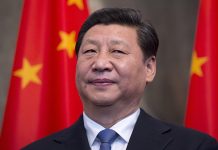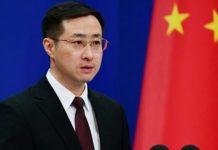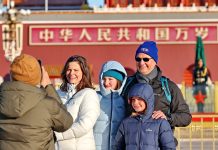BEIJING: As a series of virtual meetings among the leaders of the Association of Southeast Asian Nations (ASEAN), China, Japan and the Republic of Korea (ROK) drew to a close on Sunday, the prospect of even more vibrant cooperation is emerging. That would enable the region to manage the coronavirus pandemic more effectively and boost economic recovery.
In times of adversity — two financial crises, major natural disasters, and the onslaught of COVID-19 — East Asian countries have always stood together and looked out for each other.
The Special ASEAN Plus Three (China-Japan-ROK) Summit on COVID-19 was held in April. The active implementation of the summit’s outcomes has bolstered the region’s response to the virus, leading to a comparatively low infection rate.
As the world is facing a second wave of infections, hopes are being laid on the development of vaccines. The ASEAN Regional Reserve of Medical Supplies (RRMS) was officially launched this week during the 37th ASEAN Summit.
China has pledged to work with other parties to establish the ASEAN Plus Three Reserve of Medical Supplies for Public Health Emergencies and enhance its coordination with the RRMS.
What’s also worth noting is that four Chinese vaccines are currently in Phase III clinical trials, and China is collaborating with a number of countries on the research and development, production and procurement of vaccines. China has joined COVAX, a United Nations-backed global facility to ensure effective and equitable access to COVID-19 vaccines, and is ready to advance international vaccine cooperation.
China has also promised to take into account the needs of countries in the region and work toward the accessibility and affordability of vaccines.
“East Asian countries supported each other with medical supplies and shared relevant experience and technologies, which proved through facts and actions that multilateralism, solidarity and cooperation are the most effective ways to deal with the pandemic,” Cao Jing, deputy Secretary-General of the Trilateral Cooperation Secretariat (TCS), told Xinhua in an interview early this week.
Over the past 50 years and more, a well-connected and sophisticated industrial system that draws on the strengths of different parties has gradually taken shape in East Asia, playing an important role in spurring the economic growth of countries in the region and enhancing regional competitiveness.
A report recapping the achievements of the China-ASEAN Free Trade Area (CAFTA) was released this week as the two sides celebrate the 10th anniversary of CAFTA’s full establishment.
On Sunday, the Regional Comprehensive Economic Partnership (RCEP) agreement was signed among its 15 participating countries, launching the world’s biggest free trade bloc.
Participating countries include the 10 member countries of ASEAN (Brunei, Cambodia, Indonesia, Laos, Malaysia, Myanmar, the Philippines, Singapore, Thailand, and Vietnam) and China, Japan, ROK, Australia and New Zealand. – Agencies





